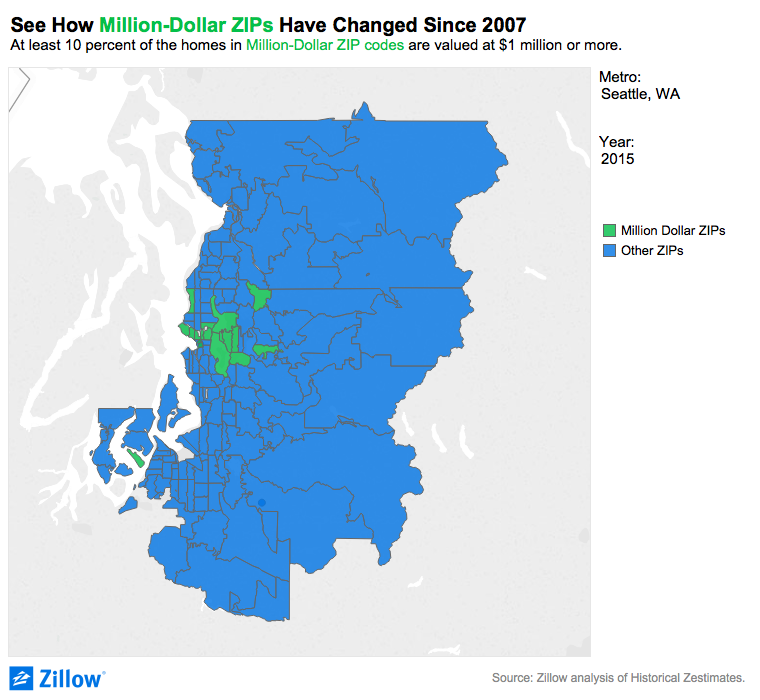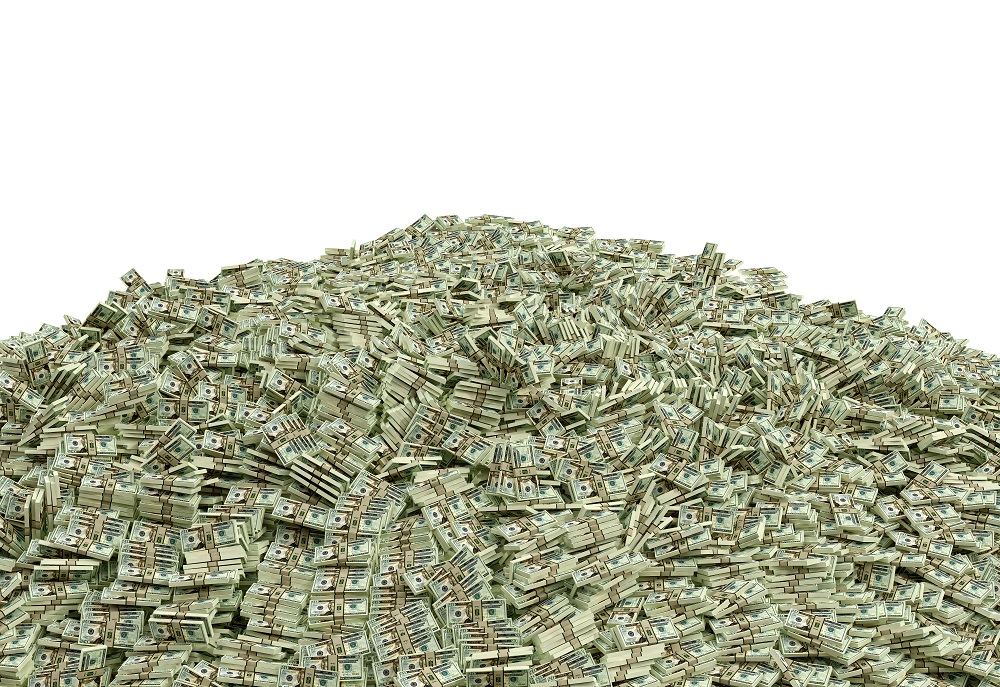See How Million-Dollar ZIP Codes Have Changed Since 2007
More than one in 25 ZIP codes has a significant portion of homes worth at least $1 million -- and most of the ZIP codes in tech hubs San Francisco (74 percent) and San Jose (77 percent) are million-dollar ZIP codes.
• More than one in 25 ZIP codes has a significant portion of homes worth at least $1 million.
• Most of the ZIP codes in tech hubs San Francisco (74 percent) and San Jose (77 percent) are million-dollar ZIP codes.
• There are more million-dollar ZIP codes now than at the housing-market peak in 2007.
As the housing market recovers, home prices in many areas of the United States have risen beyond the reach of typical buyers. More than one in 25 ZIP codes now might be called “million dollar” ZIPs: areas where a significant portion of homes are worth at least $1 million. In a growing geographical divide, these ZIP codes are increasingly concentrated in a few coastal cities.
We examined the distribution of Zestimates for single-family homes and condominiums across 29,991 residential ZIP codes on May 31 of several years starting in 2007. If more than 10 percent of these properties was valued at $1 million or more, that ZIP code was identified as a million-dollar area for the year.
Unsurprisingly, being a million-dollar ZIP code is analogous to being an expensive ZIP code: Nationally, the Zillow Home Value Index stands at $200,400, but in May 2017, the average million-dollar ZIP had a ZHVI of $900,584.
Million-dollar ZIPs have passed their pre-recession housing market peak from 2007, when there were 1,108 million-dollar ZIPs—3.77 percent of those examined. That figure had dipped to 958 (3.26 percent) in 2014, but by May of this year, 1,280 ZIP codes (4.35 percent) were million-dollar ZIPs.
Like high-end home values, new million-dollar ZIP codes are concentrated in booming coastal markets. Of the 346 ZIP codes that crossed the million-dollar threshold after 2014, 114 (32.9 percent) are in six West Coast metros: Seattle, Portland, Ore., San Francisco, San Jose, Los Angeles, and San Diego. On the East Coast, four metros (New York, Boston, Miami, and Washington, D.C.) accounted for another 92 new million-dollar ZIPs (26.6 percent of the total).

The consequence of this growth is a striking divergence between affordability in coastal and interior cities. Most ZIP codes are million-dollar ZIP codes in tech hubs San Francisco (74 percent) and San Jose, Calif. (77 percent), and other coastal cities are catching up. In Seattle, for example, the number of million-dollar ZIPs doubled from 19 in 2007 to 38—24 percent of the area’s total ZIPs — in 2017. By contrast, only one major metro in an interior state cracked 10 percent: Denver, at 10.4 percent. Even lively places like Minneapolis (2.7 percent), Chicago (4.5 percent), and Austin, Texas (7.9 percent), are affordable by comparison.
These price increases may be a boon to existing homeowners (assuming they can swallow any accompanying property tax increases), but they also serve as a barrier to homeownership or even residence in the nation’s most economically-vibrant regions. Workers in the interior who might otherwise relocate to boom towns for higher wages may be simply be priced out of a better life before they have a chance to build it.
Related:

